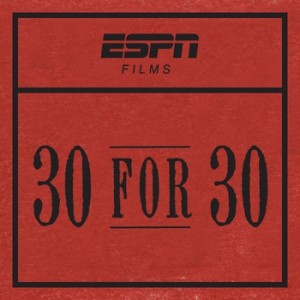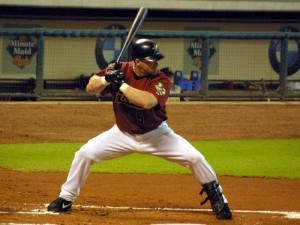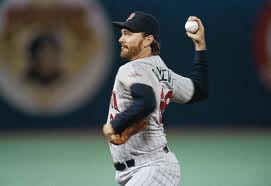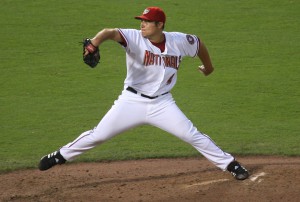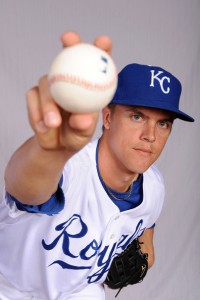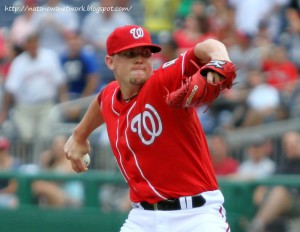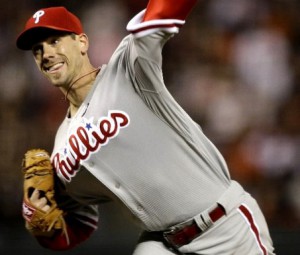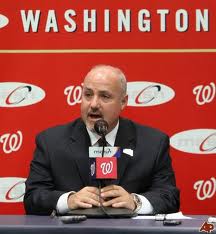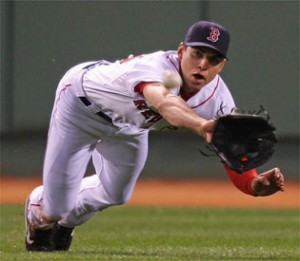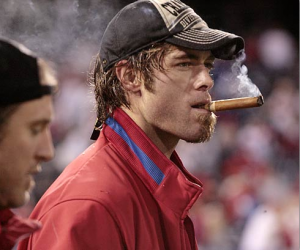For me, the ESPN “30 for 30” series was one of the best creations of TV over the past few years. The documentary approach to sports journalism has been refreshing and (in most cases) great TV. When sports programming can keep even a passing sports fan (my finacee) interested and asking for more, you know its been done well.
I listen to almost exclusively podcasts in the car these days, and one of my favorites is the “Firewall and Iceberg” podcast recorded by the lead TV reviewers Alan Sepinwall and Dan Fienberg from www.hitfix.com. I first learned of reviewer Alan Sepinwall by his appearances on Bill Simmons‘ podcasts (which are first in line to listen to when they get released) and really enjoy his reviews online and their podcasts.
I happened to be perusing the hitfix.com site lately (I was looking for the name of a show they were extolling on the latest podcast) when I came across this link: Dan Fienberg’s rankings of the 30 “30-for-30” shows. While I did appreciate most of his comments, I didn’t necessarily agree with the rankings he came up with for the programs. Since i’ve seen every one of the series, I thought i’d go ahead and do my own rankings.
Disappointing or Unwatchable
- “Marion Jones: Press Pause” As most critics have noted, this essentially turned into a glorification of Marion Jones and never once delved into her steroids usage, why she did it, or touch on any of the real issues involved with her.
- “Without Bias” – It essentially was a step-by-step review of the story of the player without adding much analysis to the story.
- “Straight Outta LA” – Unwatchable, I turned it off halfway through. Ice-T‘s not much of a filmmaker.
- “One Night in Vegas” – Another really weird documentary, especially with the gangsta-poem readings at the beginning and end of the show. I find it really difficult to glorify the death of a rap star who essentially talked his way into being a target.
- “Silly Little Game” – Re-enactment of the first group of people to play fantasy baseball; it sounds as interesting as watching the first accountants come up with regulatory principles in a room together.
- “The House of Steinbrenner” – This wasn’t so much a documentary as it was a glorification of a franchise that has used its superior financial might for the entire century. Poor Yankees fans; your stadium has been replaced with a Billion dollar monstrosity that has $4,000/game seats and is guaranteed to skew the revenue system in baseball for another 50 years. Awesome.
Watchable but could have been done better
- “The Birth of Big Air” – Matt Hoffman certainly is an interesting character but I don’t really consider extreme sports of any kind to be “real” sports. Yes they’re difficult feats of athletic prowness … but so is ballet dancing. Yes, i’m difficult to watch most olympic sports with 🙂
- “The U” – Too long, and gets bogged down in the year-to-year machinations of the program.
- “Unmatched” – Such an uncomfortable documentary; I came away from watching it with the interesting storyline that Evert and Navratilova were such friends … but the tone of the story and music choices had me essentially waiting for the lesbian coupling that seemed to be so pushed by the filmmakers. Ugh.
- “Little Big Men” – Good story, but there’s been so many American little league winners, as well as the dilution of the field, that this story loses its impact.
- “Guru of Go” – Perhaps combining both the story of Hank Gathers’ death AND the basketball system of Paul Westphal confused the story.
- “The Legend of Jimmy the Greek” – one of the very first ones shown and certainly an interesting story, but the re-enactment voice over ruins the story.
- “June 17, 1994” – Brings bad some strange memories. I loved the never-before-seen footage of sportscasters but I thought the story could have done with actual images and story telling.
- “Run Ricky Run” – Another weird documentary. Hard to feel remorse for a drug using athlete though.
- “Muhammad and Larry” – This was perhaps the most depressing of the series. Ali was so brain damaged by the time he took this fight, it seems almost criminal now that he was allowed to fight. The story drags though, using weird fillers for most of the time and not really showing the fight itself.
Interesting watches
- “The 16th Man” – Good, but so was Invictus.
- “Jordan Rides the Bus” – I love Ron Shelton‘s work but you cannot help but wonder how good this would have been with actual participation from Michael Jordan. You come away from the story with the thought that Jordan actually had talent and that he worked at his baseball craft.
- “The Pony Excess” – Lots of interviews, great detail. Probably a bit too long though.
- “Tim Richmond: To the Limit” – I thought it was really interesting that NASCAR turned out to be so introspective about the clear mis-treatment of one of its own … all in the name of fear over his illness. Read his wikipedia page for some really interesting notes about his essentially be framed for his positive drug test. I cannot imagine this news breaking in Nascar or any other major sport today.
Good to Very Good
- “Fernando Nation” – If you don’t remember just how amazingly dominant Fernando Valenzuela was when he came to MLB, check out his baseball-reference page. In his rookie season he threw EIGHT shutouts, and started the season 8-0 with 8 complete games, and only gave up FOUR earned runs in his first 8 starts. That’s a heck of a start to the season. The story telling related to the treatment of the Mexican-American community in Los Angeles was also interesting to learn about.
- “No Crossover: The Trial of Allen Iverson” – Another that really could have used involvement of the principal character of the story. Nonetheless, the substories related to the high school rivalries and politics of the Tidewater area were fascinating, if not necessarily substantiated. Having lived in Virginia at the time, the amazing part of the Iverson story was that he was named both the Football and the Basketball player of the year in the state … as a Junior. He undoubtedly would have done the same as a senior.
- “King’s Ransom” – Interesting story telling from a great director in Peter Berg. The involvement and discussions with Gretzky on the golf range really gave this story its life. Unlike the story of LeBron James moving cities and destroying a franchise, Gretzky’s departure clearly altered the direction of the Edmonton Oilers for the long run.
- “Small Potatoes: Who Killed the USFL?” – Some criticized this documentary, but just for the interview with the incredibly egotistical Donald Trump make this for me.
- “Into the Wind” – Such a moving story. Steve Nash‘s involvement was really special in telling this inspirational Canadian pride story.
The Best of the Series
- “Four Days in October” – A great documentary if only for the fantastic interviews with Pedro Martinez. I found the footage of the Red Sox players facing a 3-0 deficit fascinating, and the drama of the games in retrospect makes the Boston comeback even more amazing. Update: After several re-watches, I moved this up in my rankings.
- “The Band that Wouldn’t Die” – Most say this is the best of the series. I feel they’re getting starry-eyed by the director (Barry Levinson) versus the actual story. But this obscure story is a highlight of the series and is a great example of the richness of American sport as a subject matter.
- “Winning Time: Reggie Miller vs. The New York Knicks” – One of the absolute best stories. The interviews with Reggie Miller and Spike Lee make this one of the best of the series.
- “The Best That Never Was” – My father immediately recalled who Marcus Dupree was, and this story was an interesting tale. My biggest takeaway was the 100% positiveness of Dupree, even today. He’s not angry or sad about what his life has become (he’s a truck driver in rural Mississippi). On the contrary, he’s grateful for everything he had and all the opportunities he got.
- “The Two Escobars” – the footage, interviews and story told here was fantastic. I only wish it was not 100% subtitled.
- “Once Brothers” – Another great story, told through the eyes of the very human Vlade Divac. It could have used a bit more subtext into the politics behind the split of Yugoslavia for those of us who get lost in the mid 80s politics.
If I had to give a best and worst, I’d probably go with “The Two Escobars” for best and “Marion Jones” as the worst. I can’t wait to see the stories they have in the pipeline. Steve Bartman should make for a great story to tell. The great news is that the series will continue and some of the original ideas proposed will be explored. Again referring to a Bill Simmons podcast, here’s some of the original series ideas kicked around that may still be turned into documentaries:
- 86 masters
- 89 ws earthquake
- Tysons-robin givens Relationship
- doc and darrell
- title 9
- dream Team
- fab five
- wwf/ andre the giant (couldn’t be done b/c Vince McMahon owns all the film)
- 94 rangers
- kerri suggs
- scott norwood/scapegoats (delayed b/c of the Bartman film)
- racism in sports
- franchise relocation (pushed off b/c of the Levinson Baltimore Colts band story)
- pete rose
Here’s to a great series and many more great documentaries.
5/11/11 Update: ESPN’s 30-for-30 site now allows you to rank the series yourself, which I did and ranked them as such:
1.Two Escobars
2.Band/Wouldn’t Die
3.Reggie Miller
4.Marcus Dupree
5.Four Days Oct.
6.Once Brothers
7.No Crossover
8.Who Killed USFL?
9.Fernando Nation
10.King’s Ransom
11.Into The Wind
12.Jordan Rides/Bus
13.Pony Excess
14.Tim Richmond
15.The 16th Man
16.Muhammad / Larry
17.Unmatched
18.Birth of Big Air
19.Little Big Men
20.Jimmy The Greek
21.The U
22.Guru of Go
23.June 17, 1994
24.Run Ricky Run
25.Without Bias
26.Steinbrenner
27.Silly Little Game
28.Straight Outta L.A.
29.One Night/Vegas
30.Marion Jones
After submitting my rankings, I could see how the rest of ESPN nation had these ranked and was rather surprised. As of 5/11/11, here’s the rankings overall:
1 The U
2 Pony Excess
3 Marcus Dupree
4 Reggie Miller
5 Run Ricky Run
6 Two Escobars
7 Without Bias
8 June 17, 1994
9 Once Brothers
10 No Crossover
11 Muhammad / Larry
12 Jordan Rides/Bus
13 One Night/Vegas
14 Four Days Oct.
15 Who Killed USFL?
16 Straight Outta L.A.
17 King’s Ransom
18 Guru of Go
19 Jimmy The Greek
20 Steinbrenner
21 Band/Wouldn’t Die
22 Into The Wind
23 Silly Little Game
24 The 16th Man
25 Fernando Nation
26 Little Big Men
27 Birth of Big Air
28 Unmatched
29 Tim Richmond
30 Marion Jones
“The U,” which I thought was only mediocre, led by a fairly large margin over #2. My #1 film “The Two escobars” was in the top 10, but was 3rd in overall #1 votes.
Post publishing edit: on 8/13/17, SI.com’s Media writer Richard Deitsch published his list of hte best 30 for 30’s. Many of his best list are those done well after this list was created.
“Without Bias”
“Straight Outta LA”
“One Night in Vegas”
“Silly Little Game”Watchable but could have been done better
“The Birth of Big Air”
“The U”
“Unmatched”
“Little Big Men”
“Tim Richmond: To the Limit”
“Guru of Go”
“The Legend of Jimmy the Greek”
“The House of Steinbrenner”
“June 17, 1994”
“Run Ricky Run”
Run of the Mill
“The 16th Man”
“Muhammad and Larry”
“Jordan Rides the Bus”
“Four Days in October”
“Fernando Nation”
“The Pony Excess”
Good
“No Crossover: The Trial of Allen Iverson”
“Once Brothers”
“King’s Ransom”
“Small Potatoes: Who Killed the USFL?”
Great
“The Band that Wouldn’t Die”
“Winning Time: Reggie Miller vs. The New York Knicks”
“Into the Wind”
“The Best That Never Was”
“The Two Escobars”
